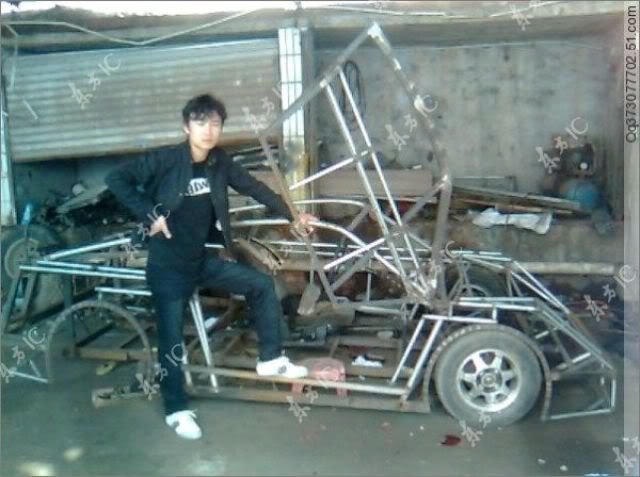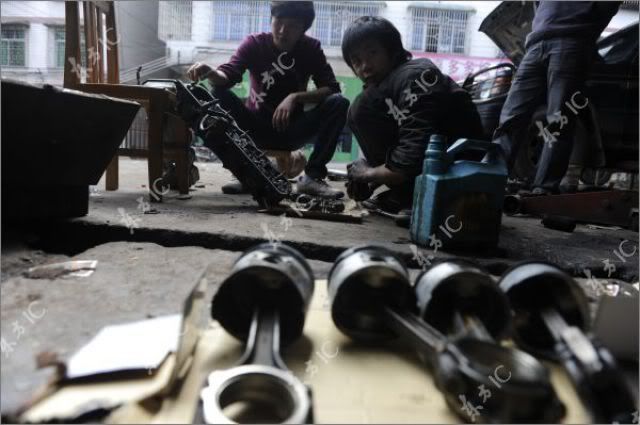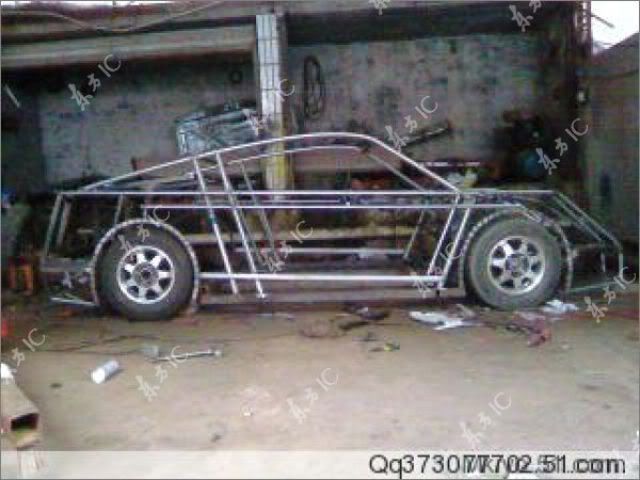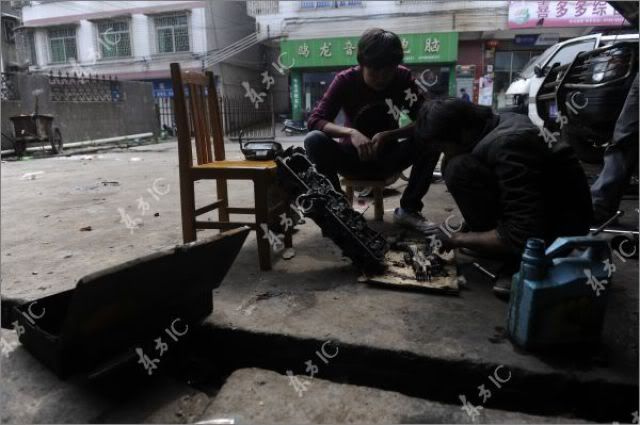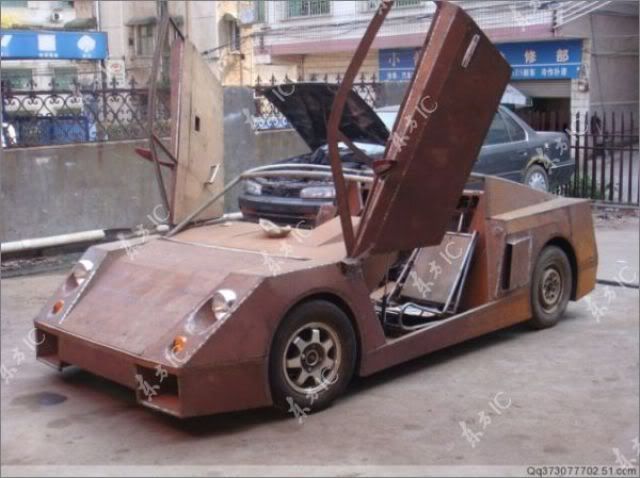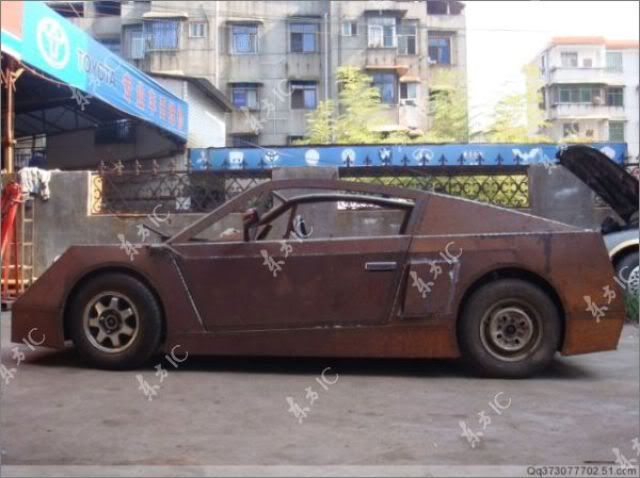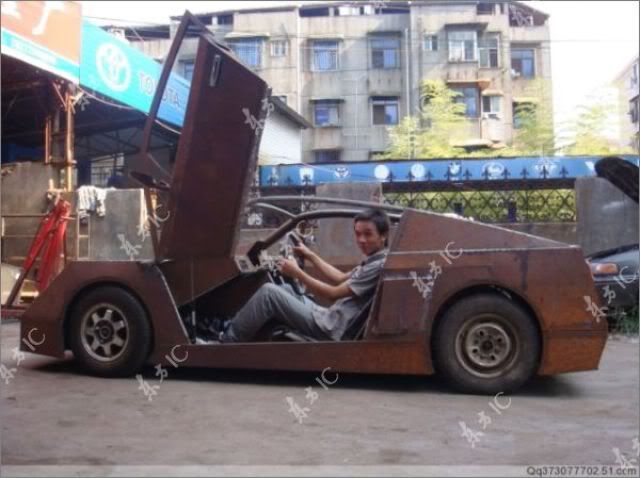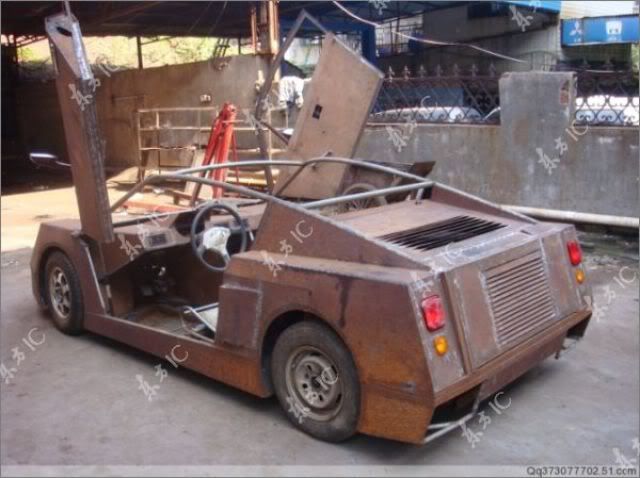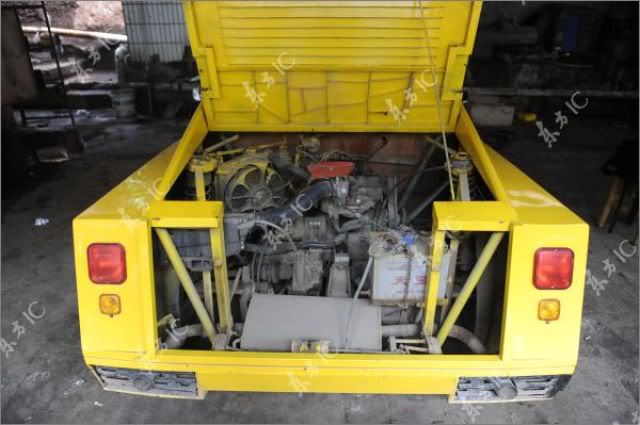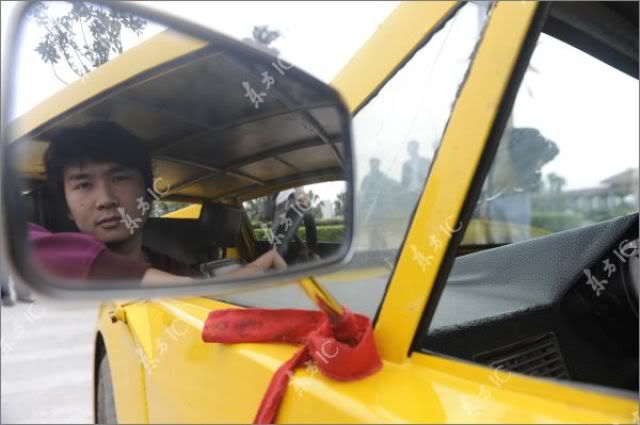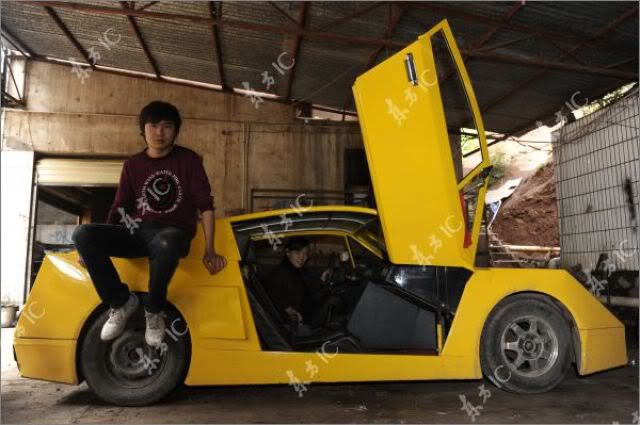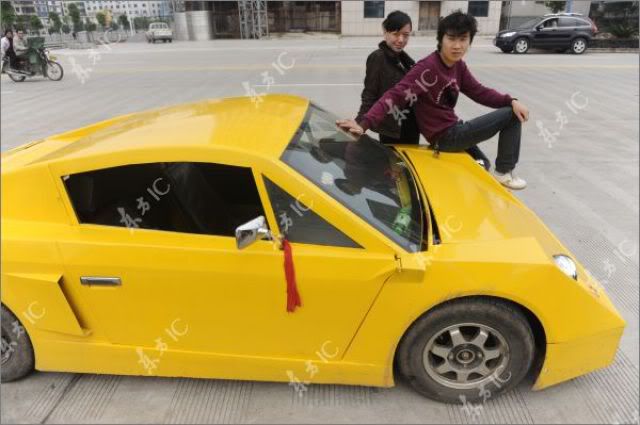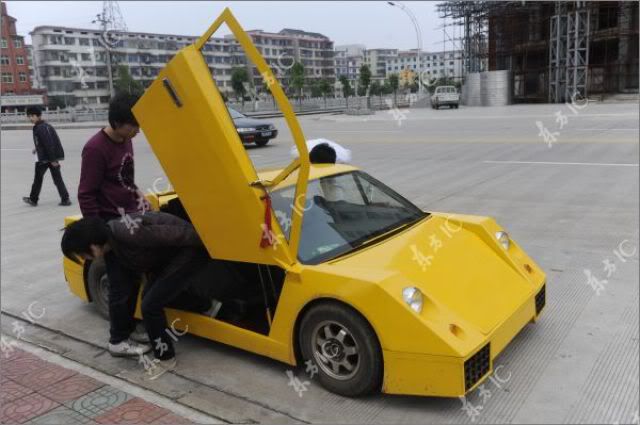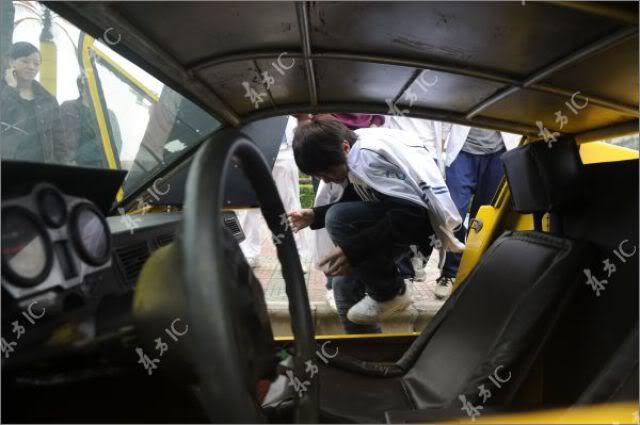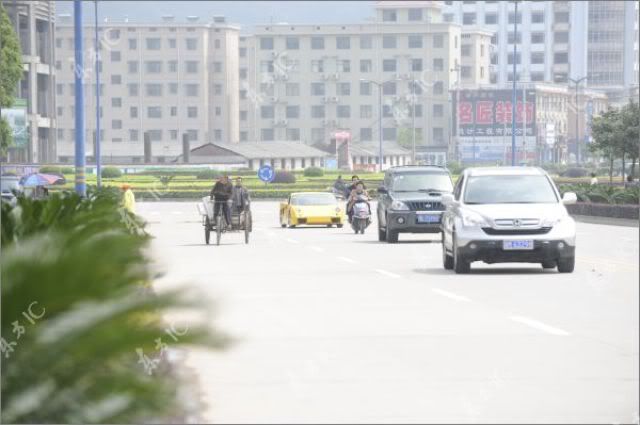Six-year-old Milagros Cerron, who was born with a rare congenital problem called the “mermaid syndrome”, her legs (bones, muscles and arteries) were joined together. She underwent three difficult surgeries in the last 5 years. Cerron always smiles and enjoys her life no matter how hard it might be for her.





















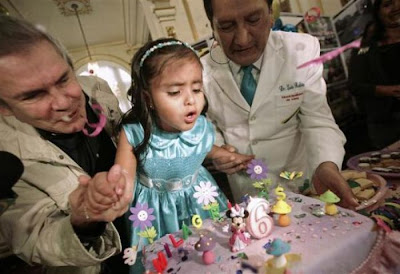

Pictures: REUTERS
Milagros Cerron - The Real Story of Little Mermaid Girl
Remote Catheter Manipulation System's Robotic Arms Succesfully Performed Surgery on Kenneth Crocker

The painstaking procedure is normally performed by hand and exposes surgeons to dangerous levels of radiation from more than 250 X-rays to monitor the location of the probe for up to eight hours.
But Mr Crocker's ground-breaking operation was completed in just one hour yesterday and hailed an 'enormous success' by British doctors.
It is the first time that the procedure - the same performed on Tony Blair by hand in 2004 - has been carried out by a fully remote-controlled robot anywhere in the world, it was claimed.
Mr Crocker, a retired postal worker from Burton-on-Trent, Staffordshire, had suffered from an irregular heartbeat for four years.
Before going into theatre, he said: 'Somebody always has to be the first to try something and I've always had a sense of adventure.
'I've been very excited about the operation for weeks. It's a little bit of extra magic being the first in the world.
'I tried cardioversion, which is electric shock therapy, and different medicines to get rid of the problem but so far nothing has worked.
'I've seen the robotic arm and it's an impressive piece of kit. I'd like to shake hands with it after when I'm cured but maybe that won’t be possible.'
Consultant cardiologist Dr André Ng (both corr) carried out yesterday's surgery using the Remote Catheter Manipulation System, a £350,000 robotic arm made in New Jersey, USA.
A 6mm-wide catheter fitted with a pinhole camera and light was inserted into Mr Crocker's groin using keyhole surgery.
Dr Ng then used the mechanical arm and a TV monitor to control its journey through the body using two buttons - one for direction and one to move forwards and backwards.
The catheter gyrates on the end of the robot's arm when it detects fibres on the heart's surface that cause the irregular rhythm.
Radio frequencies are then blasted down the catheter to perform an 'ablation', burning away the faulty fibres.
This corrects the flow of electrical currents through the organ and restores a regular heartbeat.
The system enables the six-man team - including a cardiologist, his assistant, two radiographers and two technicians - to perform the procedure in almost half the time of the traditional method.
The technique could be used to treat up to 50,000 Britons diagnosed with an irregular heartbeat each year, Dr Ng said, reducing strokes and heart failure.
A shortage of skilled clinicians mean only one in ten victims of the condition - called atrial (corr) flutter or atrial fibrillation - are currently treated using catheter ablation.
Dr Ng said: 'Surgeons receive a phenomenal amount of radiation during these kind of heart operations. But with the mechanical arm I can do the same operation from the safety and comfort of the control room.
'This is the first time in the world that the operation has been performed using this fully robotic arm.
'The catheter is programmed to perform exactly the same movements as I would manually which makes it just as precise.
'There's also the added benefit that the operations are sped up and more can be carried out because surgeons are not as tired.
'Heart rhythm treatment procedures are very common in people of all ages and there are hundreds of different conditions.
'If you think about the potential of robotic operations in a Star Trek world, then in a few years we could do the entire operation by just pushing a button.'
Speaking after the operation as Mr Crocker recovered on a ward, Dr Ng said the procedure was a success.
He said: 'Everything went very well. The critical moment was at the end when the patient's heart returned to a normal rhythm.
'There was a loud cheer from everybody taking part. It was a very exhilarating feeling for me to be the first person to use this equipment.
'The patient's heart will now have a regular rhythm for the rest of his life. That's a job well done for me. It is a massive breakthrough in surgery and hopefully many more patients will benefit from it.'
Medics performed a similar operation at St Mary's Hospital in London in 2007.
But the Sensei device used then was only semi-robotic as it required a surgeon to manipulate the catheters manually with complex controls.
Ian Rankin, from UK robot supplier Dot Medical, said: 'The catheters which performed the ablation in the Sensei system are fed through the catheter and controlled by hand, from either inside theatre or using a network controls on the outside.
'The difference with this robot is that the wires go straight into the patient's body. They are then controlled with two buttons - one for the direction of the catheter and one for it to go in and out.'
dailymail
Prahlad Jani - Fasting Over Seventy Years Till Now Without Food and Drink
 "I feel no need for food and water," states Prahlad Jani, a seventy-six year old Indian ascetic who lives in a cave near the Ambaji temple in the state of Gujarat. Mr. Jani claims that he has not had food or fluids to drink for the last sixty-five years. At the age of seven years he left home in search of spiritual unfoldment. Jani states that at the age of eleven years he was blessed by a goddess. He claims that since that blessing he has gained his sustenance from nectar that filters down through a hole in his palate, and has not passed urine or stools since then. Mr. Jani explained, "I get the elixir of life from the hole in my palate, which enables me to go without food and water." Almost daily Mr. Jani enters a state of Samadhi characterized by extreme bliss and enormous light and strength. He says that he has never experienced medical problems. He says that he did not speak for a period of forty-five years.
"I feel no need for food and water," states Prahlad Jani, a seventy-six year old Indian ascetic who lives in a cave near the Ambaji temple in the state of Gujarat. Mr. Jani claims that he has not had food or fluids to drink for the last sixty-five years. At the age of seven years he left home in search of spiritual unfoldment. Jani states that at the age of eleven years he was blessed by a goddess. He claims that since that blessing he has gained his sustenance from nectar that filters down through a hole in his palate, and has not passed urine or stools since then. Mr. Jani explained, "I get the elixir of life from the hole in my palate, which enables me to go without food and water." Almost daily Mr. Jani enters a state of Samadhi characterized by extreme bliss and enormous light and strength. He says that he has never experienced medical problems. He says that he did not speak for a period of forty-five years.In November 2003, after over a year of coaxing, Prahlad Jani was finally persuaded to participate in a scientific research study. A medical research team of twenty-one specialists, headed by Dr. Sudhir V. Shah, had Mr. Jani under twenty-four hours of observation for ten days at the Sterling Hospital in Ahmedabad. The team's research expertise included cardiology, neurology, urology, gastroenterology, ophthalmology, renal function, pulmonary function, ENT analysis, psychiatry, general medicine, and other specialities. A series of investigations were done on Mr. Jani in each of these areas according to a pre-determined protocol, and additional tests were carried out as per suggestions of the team. At the conclusion of their intensive investigations the team's doctors were left with an unexplained mystery, unable to disprove Mr. Jani's claims.
Mr. Jani was initially kept in ICU for the first twenty-four hours. For the next nine days he was kept in a specially prepared room with a sealed-off toilet and a glass door. The room was also equipped with video surveillance to continuously monitor Mr. Jani. Additionally, staff persons were assigned to stay in the same room with Jani round-the-clock to make sure that he did not eat, drink, or pass urine or stool.
To assure researchers of no possible intake of water, Mr. Jani agreed he would not bathe during the medical investigation. Mr. Jani was permitted a small measured quantity of water to use as a mouthwash. He then spat the water into a beaker to verify that none had been drunk. An ultrasound, which was made of Mr. Jani's bladder twice daily, indicated that there was urine accumulation, which subsequently decreased on its own without passing.
At the end of the ten days of observation, the team of doctors verified that Prahladbhai Jani had not taken food or drank fluids. (The average person cannot survive without water for more than four days.) The team concluded that Mr. Jani's health had not deteriorated during this study. Also, according to the hospital's deputy superintendent, Dr. Dinesh Desai, "A series of tests conducted on him show his body mechanism is that of a normal person." Mr. Jani's survival without food or fluids remains one of those unexplained mysteries.
The following are excerpts from the research team's concluding report:
1. The protocol was strictly adhered to.
2. Mr. Jani had not passed or dribbled urine during these 10 days.
3. He has not taken anything by mouth or by any other routes not even water for 10 days.
4. All his parameters remained within the range determined by the committee.
5. He has shown evidence of formation of urine, which seems to be reabsorbed from his bladder wall. However, at present the committee does not have any scientific explanation for the same but the help of senior scientists and medical personnel of the country is being taken for the same.
We are surprised as to how he has survived despite above particularly without passing urine for 10 days and remaining generally physically fit. However, it should be made very clear that we have confirmed the claim over 10 days only and we as scientists and responsible doctors cannot say anything regarding validity of the claim of his sustaining without food, drinks, urination and excretion of stools over several years.
Dr. Sudhir V. Shah (Consultant Neurophysician, Sterling Hospital/Associate professor of neurology at K. M. School of PGMR, Ahmedabad) headed the research panel of doctors who performed this study. I am deeply grateful to Dr. Sudhir V. Shah for providing the Case Summary of this study along with the photos of Mr. Jani. To view the Case Summary of Mr. Jani in its entirety please go to: P. Jani Medical Report.
psychedelicadventure
Jason Pfeiffer's Testimony Against Michael Jackson About Their Gay Relationship
Michael Jackson was in a gay relationship until his death, it has been claimed.
Former dermatologist’s assistant Jason Pfeiffer alleges he began a “passionate and sexual” affair with the ‘Thriller’ singer after meeting him in 2008 at the office of Michael’s skincare expert, Dr. Arnold Klein.
Jason says the pair bonded over their troubled childhoods, telling US TV show ‘Extra’, “We were just sitting there and we both started to cry and I got up and went over to him and said it’s going to be OK Michael.
“We hugged. And it was kind of then that the hug was a little bit more. It wasn’t until a few months later that it was obvious that Michael had feelings for me as well.
“I just assumed that he was probably bisexual. I know we loved each other, I know he told me that all the time. I believe that he was probably my soulmate.”
Dr. Klein confirmed the relationship saying he walked in on the couple when Michael, who had always denied being gay, was allegedly shirtless.
He said, “When you see two people looking at each other you know what’s happening. I was just very happy for both of them.”
Jason, who claims to have had a voicemail message which Michael left for him, believes Michael would have wanted him to speak about their alleged romance.
He said, “Setting the record straight and telling the truth, as opposed to hiding in some house in the middle of nowhere… I think he would have approved of that, yes.”
This is not the first time it has been alleged Michael, who died last June, had gay relationships.
The 50-year-old star’s unofficial biographer Ian Halperin claimed he had spoken to two men Michael had relationships with.
He said, “In the course of my investigations, I spoke to two of his gay lovers, one a Hollywood waiter, the other an aspiring actor. The waiter had remained friends, perhaps more, with the singer until his death. He had served Jackson at a restaurant, Jackson made his interest plain and the two slept together the following night. According to the waiter, Jackson fell in love.”
Inquisitr
Former dermatologist’s assistant Jason Pfeiffer alleges he began a “passionate and sexual” affair with the ‘Thriller’ singer after meeting him in 2008 at the office of Michael’s skincare expert, Dr. Arnold Klein.
Jason says the pair bonded over their troubled childhoods, telling US TV show ‘Extra’, “We were just sitting there and we both started to cry and I got up and went over to him and said it’s going to be OK Michael.
“We hugged. And it was kind of then that the hug was a little bit more. It wasn’t until a few months later that it was obvious that Michael had feelings for me as well.
“I just assumed that he was probably bisexual. I know we loved each other, I know he told me that all the time. I believe that he was probably my soulmate.”
Dr. Klein confirmed the relationship saying he walked in on the couple when Michael, who had always denied being gay, was allegedly shirtless.
He said, “When you see two people looking at each other you know what’s happening. I was just very happy for both of them.”
Jason, who claims to have had a voicemail message which Michael left for him, believes Michael would have wanted him to speak about their alleged romance.
He said, “Setting the record straight and telling the truth, as opposed to hiding in some house in the middle of nowhere… I think he would have approved of that, yes.”
This is not the first time it has been alleged Michael, who died last June, had gay relationships.
The 50-year-old star’s unofficial biographer Ian Halperin claimed he had spoken to two men Michael had relationships with.
He said, “In the course of my investigations, I spoke to two of his gay lovers, one a Hollywood waiter, the other an aspiring actor. The waiter had remained friends, perhaps more, with the singer until his death. He had served Jackson at a restaurant, Jackson made his interest plain and the two slept together the following night. According to the waiter, Jackson fell in love.”
Inquisitr
Elephant at West Midland Safari Park Now Has a Sidejob

An elephant put its size to good use when it helped a zoo keeper start his car by giving it a shove. Lawrence Bates was all set to call for assistance when his jeep at West Midland Safari Park broke down, until Five the elephant decided to give him a helping hand.
The 18-year-old African Elephant got behind and pushed the car out of trouble and out of the enclosure. Director of Wildlife, Bob Lawrence, said: "The jeep broke down one morning and the lads jumped out to have a look at it, popped the bonnet and had a look at the oil.
"We still couldn't get it to start so gave it a push start, eventually got it going - at this time though its covered with dirty hand marks so Five gave it a quick wash and a hose down. But the jeep broke down again and to our astonishment Five came over and decided to give us a hand.
"She lifted the bonnet up, got the dipstick, and gave it to Lawrence. When we still couldn't get it to start, she went round the back and gave us a push. I've never seen anything like this in my life - it was absolutely incredible."
Elephant provides breakdown assistance to zoo keeper
Mercedes Stick On The Wall of Bank of America
This is what happens when your foot accidentally gets stuck on the gas pedal.
The car crashed into the wall of the Bank of America building’s parking garage in Tulsa, Oklahoma. The white Mercedes broke through the wall from the 6th floor damaging vehicles in a parking lot below with debris rain. Good, no one was hurt.
The 67-year-old driver of the Mercedes told police he somehow got his foot stuck under the gas pedal. He says that caused the car to zoom across the parking garage in reverse and slam into the outer wall.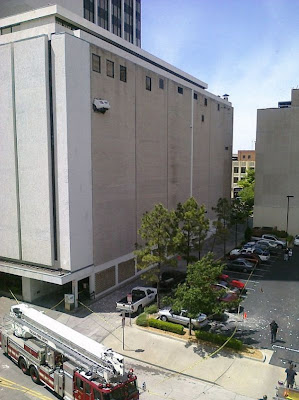







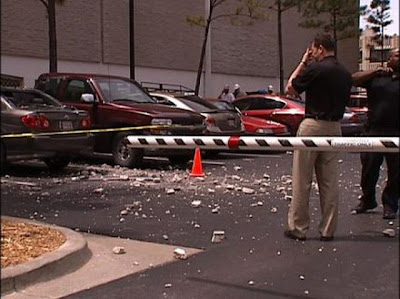

Source: newson6
Subscribe to:
Comments (Atom)
